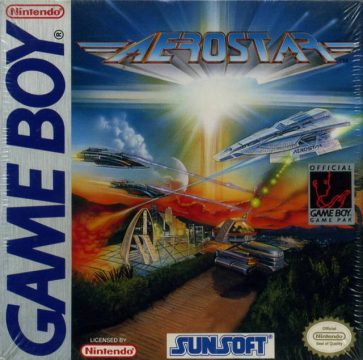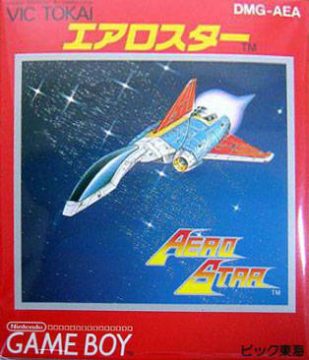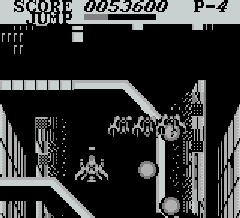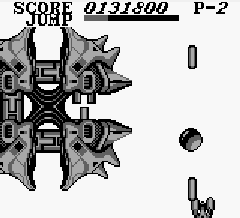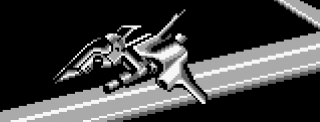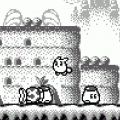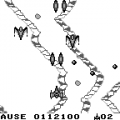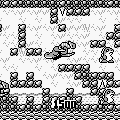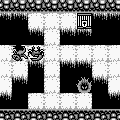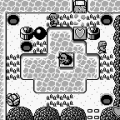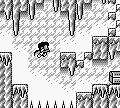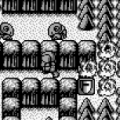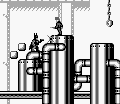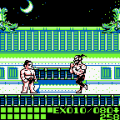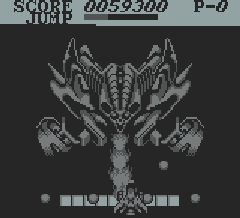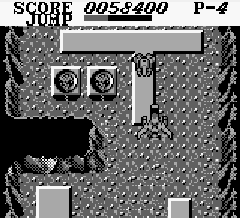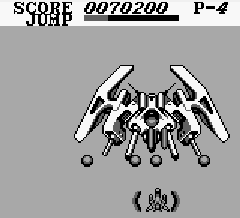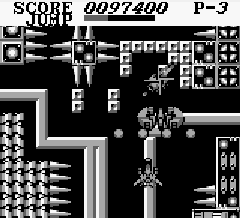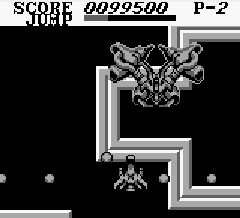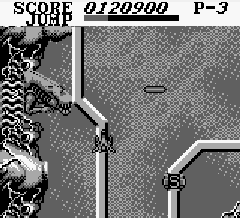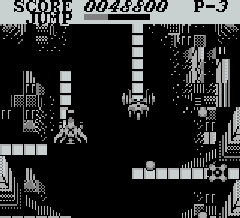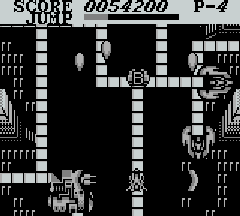When most people think of shoot-em-ups, they think of giant bosses, screens full of bullets, tight controls, and the ability to move within the confines of the screen unrestricted. AeroStar fills the first three requirements, but forgoes the unrestricted flight. This 1991 Game Boy shoot-em-up has the eponymous aircraft jump from road-to-road a la Bump ‘n’ Jump. A meter is placed on the top of the screen to display the amount of available airtime. The meter drains while the plane is in the air and replenishes while the ship is grounded. Because of this, AeroStar offers a lengthy, unique, and challenging experience.
The difficulty curve isn’t very high compared to other shmups; memorization isn’t really needed until the end of the game. In the early stages, players are eased in with large roads to maneuver and slow enemies. Later stages showcase AeroStar‘s challenge by having thinner roads, more enemies on screen, and a higher bullet count. While challenging, players will likely be able to reach the end of AeroStar‘s seven level campaign in a few attempts. For struggling gamers and shmup veterans, the game offers Easy and Hard difficulties respectively. The difficulty affects the amount of credits given, the strength of the enemies, and the amount of points needed to earn 1-ups.
The jumping mechanic is put to good use. It is an integral part of gameplay as opposed to being a cheap gimmick. Players will have to jump around blockages, bottomless pits and unique obstacles such as roads built and destroyed by the enemies. Lettered icons representing power-ups are acquired by destroying certain enemies. Shooting the power-ups will cycle through the five different power-ups. At your disposal are: a vulcan spread-shot (V), a twin laser that can be redirected horizontally (L), a powerful guided bomb (B), a sideways crescent beam (S), and a set of two options (O). Power-ups cannot be stacked, but bonus points are awarded for each additional power-up gathered.
The bosses are big and imposing, taking up most of the screen, but the battles aren’t limited to just stationary bullet-fests. Most of these giants will move around the screen, with a few of them flying backwards, forcing the player to chase them. Unlike most shooters, AeroStar‘s challenge lies in the stages, rather than the bosses. The bosses, with Stage 6’s being the exception, have no shielding and are vulnerable at all times. When powered up, the AeroStar inflicts a large amount of damage to bosses. With these weapons, an aggressive player can destroy bosses in less than thirty seconds.
The graphics are of high clarity with smooth sprites, detailed backgrounds, and a clean overall look. On a technical level, AeroStar‘s graphics are on par with its contemporaries. The animations (what little there are) are smooth and fluid. With impressive artwork, the Game Boy’s 4-color palette is put to good use. The designs have established anime and science fiction designs, with Aliens being the most prevalent inspiration. With all that said, the Game Boy’s limitations can occasionally get in the way of gameplay. The scrolling is jerky, enemy fire can be hard to determine, whether airborne or grounded, and the tiny screen only amplifies these problems. The Super Game Boy or Game Boy Player is very much encouraged for playing AeroStar.
The sound effects are your standard Game Boy fare. When bosses are destroyed, there are multiple explosion sound effects. Unfortunately, there are no sound effects for enemy fire, and their explosions have the same sound no matter the size. D. Ando’s soundtrack has a variety of tunes with each stage theme having a different mood. It changes tone to go along with the in-stage graphics and action. You may not be scrambling to download the soundtrack, but some songs will be stuck in your head.
There is currently no compilation or download service offering AeroStar, but with a little searching, the game can be had for a bargain. Importing is also an option if you cannot find it domestically, since the Game Boy has no region coding. The irony is, the AeroStar vehicle, with its lack of flight, turns AeroStar from an average Game Boy shooter into a memorable and lasting experience.

